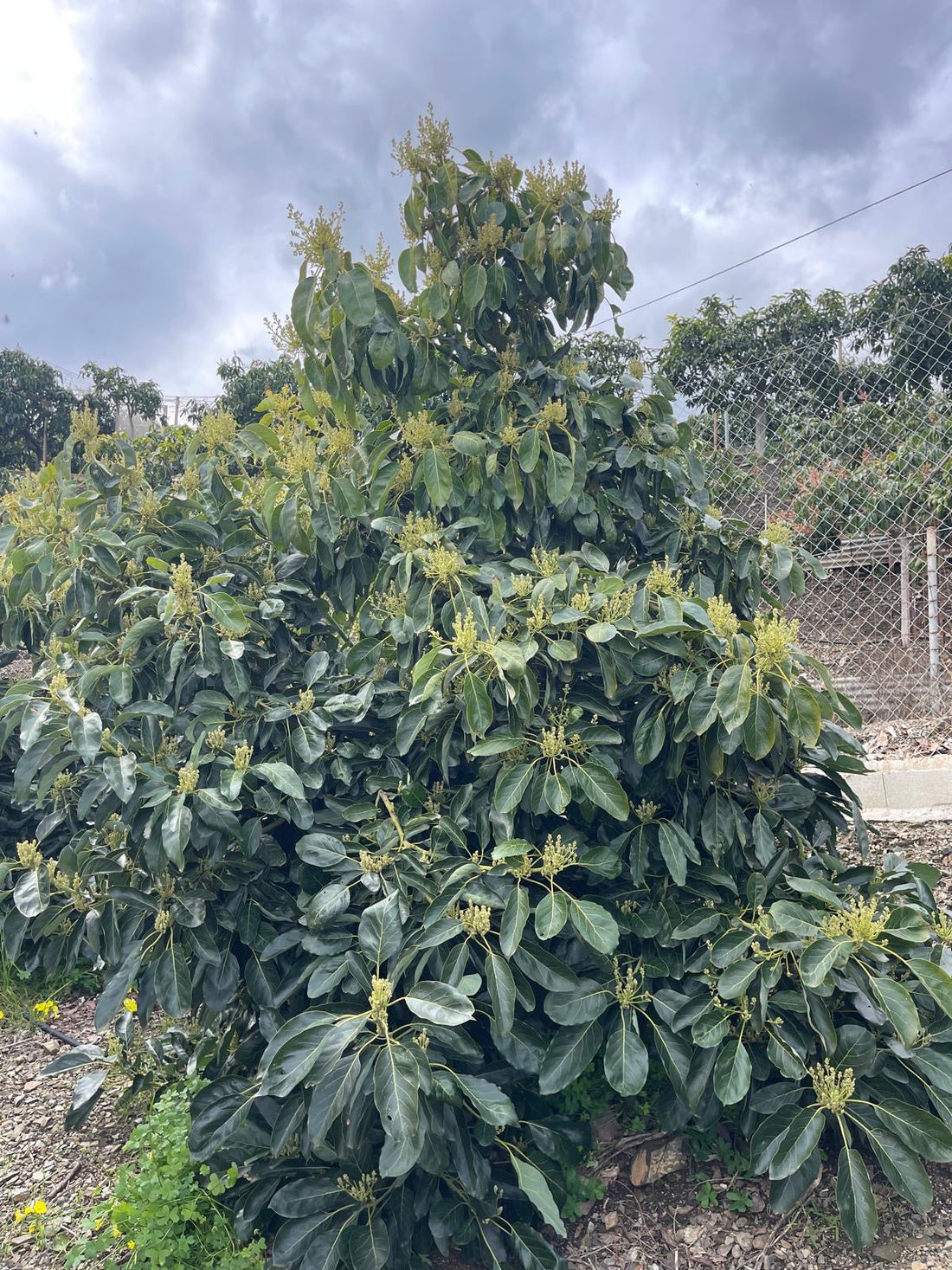
Management and stages of avocado cultivation in Axarquia
Share
Below, I propose a rough plan for the avocado growing cycle in Malaga, based on the Hass cultivar, which is one of the most common. Keep in mind that the dates may vary slightly depending on the climatic conditions each year and the specific characteristics of each plot, but the following guide will serve as a reference for organizing your work on the farm:
1. Crop Preparation and Maintenance (November – December)
-
Pruning and Selection:
During the winter, maintenance pruning is recommended to remove dry or damaged branches, promoting good air and light circulation. -
Fertilization and Soil Analysis:
It's a good time to perform soil analysis and apply organic or mineral fertilizers to prepare the tree for the next production cycle. -
Irrigation:
At this time, you can begin a watering schedule based on lower temperatures, ensuring the tree is in good condition before flowering.
2. Floral Induction (January – February)
-
Bud Formation:
At the beginning of the year, avocado trees begin to notice the development of flower buds. Proper nutrition and pest control are essential to ensure these buds transform into healthy flowers. -
Controlled Irrigation:
Irrigation begins to be adjusted to avoid excess water that could affect flower induction. Moderate watering promotes mild "water stress," which in many cases encourages flowering.
3. Flowering and Pollination (March – April)
-
Opening of the Flowers:
Flowering usually occurs in spring. During these months, the flowers open, and good pollination activity is crucial. -
Pest and Disease Control:
During this period, it is essential to monitor for possible insect or fungal attacks, applying preventative treatments if necessary. -
Environmental Conditions:
Moderate temperatures and adequate humidity promote proper pollination, which will result in efficient fruit set.
4. Fruit Setting and Development (May – August)
-
Beginning of the Curdling:
After pollination, avocado growers should observe the beginning of fruit set during late spring. -
Growth and Thickening:
During the summer, the fruit begins to grow and thicken. It's key to maintain regular watering, avoiding both excess and lack of water, and to continue providing good nutrition through foliar or soil fertilization. -
Heat Stress Management:
Given the high summer temperatures, it is important to protect the crop with shading techniques or watering at strategic times, minimizing stress on the tree.
5. Ripening and Harvest (September – November)
-
Fruit Ripening:
As fall approaches, avocados will continue to ripen. Observing their size and texture is essential to determining the optimal harvesting stage. -
Harvest:
Harvesting can begin in mid-September and extend through November, depending on ripeness and the market. It's advisable to harvest gradually to avoid damaging the plant and maintain fruit quality. -
Post-Harvest:
Once harvested, post-harvest treatments (cleaning, sorting, and, in some cases, antifungal treatment) are vital to preserve the avocado's quality until it is marketed.
Final Recommendations
-
Constant Monitoring:
Keep a regular record of weather conditions, both to adjust irrigation and to detect potential pest or disease problems. -
Climate Adaptation:
Since Málaga has a mild Mediterranean climate, the seasons can be influenced by milder winters or warmer summers, so it's important to be aware of these variations. -
Technical Advice:
It is always advisable to seek the advice of an avocado agronomist to optimize cultivation efforts based on the specific conditions of the farm.
This planning will allow you to have a well-organized growing cycle adapted to the climate of Malaga, promoting both the quality and productivity of your avocado crop. Good luck with your agricultural endeavors!
